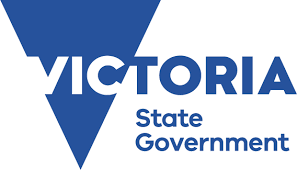The Circular Economy Business Innovation and Business Support funds are Now Open
- Haines Consulting Group
- Mar 1, 2023
- 6 min read

The Victorian Government has announced the opening of two new funds to support businesses in transitioning to a circular economy. The Circular Economy Business Support Fund and the Circular Economy Innovation Fund will provide grants to businesses and collaborative partnerships working on circular economy solutions.
The Circular Economy Business Support Fund is designed to increase the efficiency and uptake of circular economy market solutions, with a focus on identifying, commercialising, and scaling solutions. Projects that prioritise developing circular design capabilities within industry are also eligible for funding. Grants between $50,000 to $1 million are available for projects. Both collaborative and individual projects are eligible to apply.
The Circular Economy Innovation Fund is aimed at research and development projects that are designed to stimulate innovative and new circular economy market solutions. Projects must be delivered in a collaborative partnership. The fund will provide grants between $50,000 to $400,000.
Both funds are part of the Victorian Government's commitment to driving the transition to a circular economy and reducing waste across the state. The Circular Economy Business Support Fund and the Circular Economy Innovation Fund are key parts of this effort, and the government encourages businesses and collaborative partnerships to take advantage of these opportunities to support their circular economy solutions
Applications close: Wednesday 12 April 2023
The Circular Economy Business Support Fund
This fund is designed to increase the efficiency and uptake of circular economy market solutions and is open to both collaborative and individual projects.
It focuses on identifying, commercialising, and scaling solutions. Projects that prioritise developing circular design capabilities within industry are also eligible.
Total funding available: Each project can receive a grant between $50,000 and $1,000,000 (ex GST).
Co-contribution: $1:$2. Co-contributions can be either financial (cash) or In-kind. At least 80% of the Co-contribution must be cash contribution
Fund outcomes
Projects must contribute to 2 or more of the following outcomes:
· Avoidance of waste materials to any waste or Recycling destination.
· Creation of new circular products and services.
· Increase employment through the direct creation of jobs
· Increase capacity to extend the useable life of products
· Reduced greenhouse gas emissions
· Improve the capacity of industry for acting on sustainability.
Lead Applicants must:
have a current Australian Business Number (ABN). If the Applicant is a Trust, the Trustee - as the proper Applicant - must meet this requirement
have been operating for a minimum of 2 years by the application closing date (to be validated by the date that the organisation’s ABN is active from). If the Applicant is a Trust, the Trustee - as the proper Applicant - must meet this requirement
be able to demonstrate financial viability to undertake the project (will meet or exceed the minimum co-contribution requirements)
agree to comply with the Terms of Participation in Grant Programs
agree to comply with the General grant funding agreement terms and conditions
submit their Fair Jobs Code Pre-Assessment Certificate Number with their application if applying for $500,000 or more (exclusive of GST). A Certificate must be held prior to applying for the grant.
What will be funded
Projects focused on identifying, implementing, commercialising or scaling circular market solutions that prevent, minimise or eliminate waste and pollution, or keep products and/or materials at their highest use. Eligible projects are also those that are focused on building capabilities and capacity within industry to apply circular design to achieve the above.
Projects must improve the environmental outcomes of products, services, industries, supply chains or systems and contribute to Victoria’s transition to a Circular Economy. All projects must:
meet all regulatory or planning requirements within 6 months of receiving funding
ensure at least 50% of project activities are implemented in Victoria
be completed by 15 December 2024.
Project types include:
identification and development
implementation, commercialisation and scaling
training and development programs for the industry.
Project activities can include (but not limited to):
activation of waste-avoidance solutions in published industry/business-focused action plans and roadmaps
baseline studies to understand issues and opportunities for circularity (e.g., in businesses or industries)
waste audits and Circular economy supply chain mapping
challenge-based projects (e.g., hackathons)
developing, delivering or accessing Circular economy assessment tools or services (e.g., life cycle assessment)
developing, delivering or accessing Circular economy advisory services
delivering a campaign focused on increasing transparency and awareness of Circular economy in businesses
facilitate networking and collaboration focused on Circular Economy business opportunities
establishing or expanding activities in a Circular economy business focused group or cluster
delivering Circular economy training to Businesses
rolling out business-led product stewardship initiatives/programs in Victoria (not Recycling)
financial and non-financial assessments (e.g., CBA, ROI, SROI)
large scale pilots, trials, and demonstrations
business case development and cost-benefit analysis
purchasing, installing and commissioning infrastructure, plant and equipment or other assets
designing and delivering promotional content for new products and services
developing and delivering capability building for Businesses (e.g., training, education, innovation services)
startup incubators and accelerator programs
developing and launching a website, application, or digital platform.
Project costs must be directly related to the project and can only include:
new or existing staff costs (such as salaries) that are demonstrated to be directly related to the project
consultants
contractor services
marketing, advertising, promotion
market research and surveys
venue and equipment hire (including access to innovation labs and services)
legal costs (such as costs to obtain IP)
printing
design and copywriting
installation and commissioning
freight
project management costs
capital purchases/assets (infrastructure, plant, and equipment)
purchase of specialised vehicles (e.g., front-end loaders, forklifts) where equipment is integral for the project to occur, and the Applicant demonstrates they are unable to proceed with the project without funding for the vehicle.
Circular Economy Innovation Fund
This funding is for research and development projects that are designed to stimulate innovative and new circular economy market solutions. Projects must be delivered in a collaborative partnership.
The fund will provide grants between $50,000 to $400,000.
Applications close on 12 April 2023.
These projects prevent, minimise or eliminate waste and pollution and keep products and materials in use – at the highest value – for longer.
The projects must be:
delivered by a Collaborative Partnership
innovative (have never been done in Victoria before).
Projects must improve the environmental outcomes of products, services, industries, supply chains or systems and contribute to Victoria’s transition to a Circular Economy.
Co-contribution: $1:$2. Co-contributions can be either financial (cash) or In-kind. At least 10% of the Co-contribution must be cash contribution.
Collaborative Partner(s) (mandatory)
The Lead Applicant must have at least one Collaborative Partner who is a:
Research Institution
Business (Commercial for-profit and Social Enterprises)
Charity or other Not-for-profit
Industry groups or Association
Government or local government organisation
Community organisation or group.
What will be funded
Projects must be collaborative and explore an innovative market solution that aims to improve the environmental outcomes of products, services, industries, supply chains or systems and contribute to Victoria’s transition to a Circular Economy.
Projects must represent the research and development of an Innovation for Victoria – that it haot been done within Victoria previously.
Projects should demonstrate Circular Economy design solutions/ strategies to eliminate or minimise waste and pollution and/or keep products/ materials in use at their highest value for longer.
Examples of circular design solutions/ strategies that may be explored in projects include but are not limited to:
Design for dematerialisation, minimise inputs, waste avoidance
Design for durability, reuse, refill, sharing and resell
Design for maintenance, repair, upgradability
Design for Refurbishment, remanufacturing, disassembly/ reassembly
Projects must contribute to two or more of the following outcomes:
Creation of new Circular Products and Services
Avoidance of waste materials to any waste or Recycling destination
Increase employment through the direct creation on of jobs.
Increase capacity to extend the useable life of products
Reduced greenhouse gas emissions.
All projects must also:
meet all regulatory or planning requirements within 6 months of signing funding agreement
ensure at least 50% of project activities are implemented in Victoria
be completed by 15 December 2024.
Project types:
Research and development
Project activities can include:
research and feasibility studies
case studies and business case development
ideation or concept generation
design and development of product, service, process and/or systems
prototyping and testing
experimental proof of concept
small-scale, trials, and demonstrations.
The following project costs are eligible for funding:
new or existing staff costs (such as salaries) that are demonstrated to be directly related to the project
procurement of materials and services supporting research and development
product testing and validation to ensure environmental and human health performance.
external consultancy or contract costs
project management costs (this can be internal or external). If internal must be directly related to the project.
capital costs (e.g., purchase or lease of infrastructure or equipment)
project evaluation
development of educational material that shares learnings and can be made publicly available.
purchase of specialised vehicles (e.g., front-end loaders, forklifts) where equipment is integral for the project to occur, and the Applicant demonstrates they are unable to proceed with the project without funding for the vehicle.
Haines Consulting Group is a management consultancy firm specialising in business strategy, growth, government grants and new venture developments. If you need any assistance with a grant submission please contact us now for a confidential conversation.







Comments